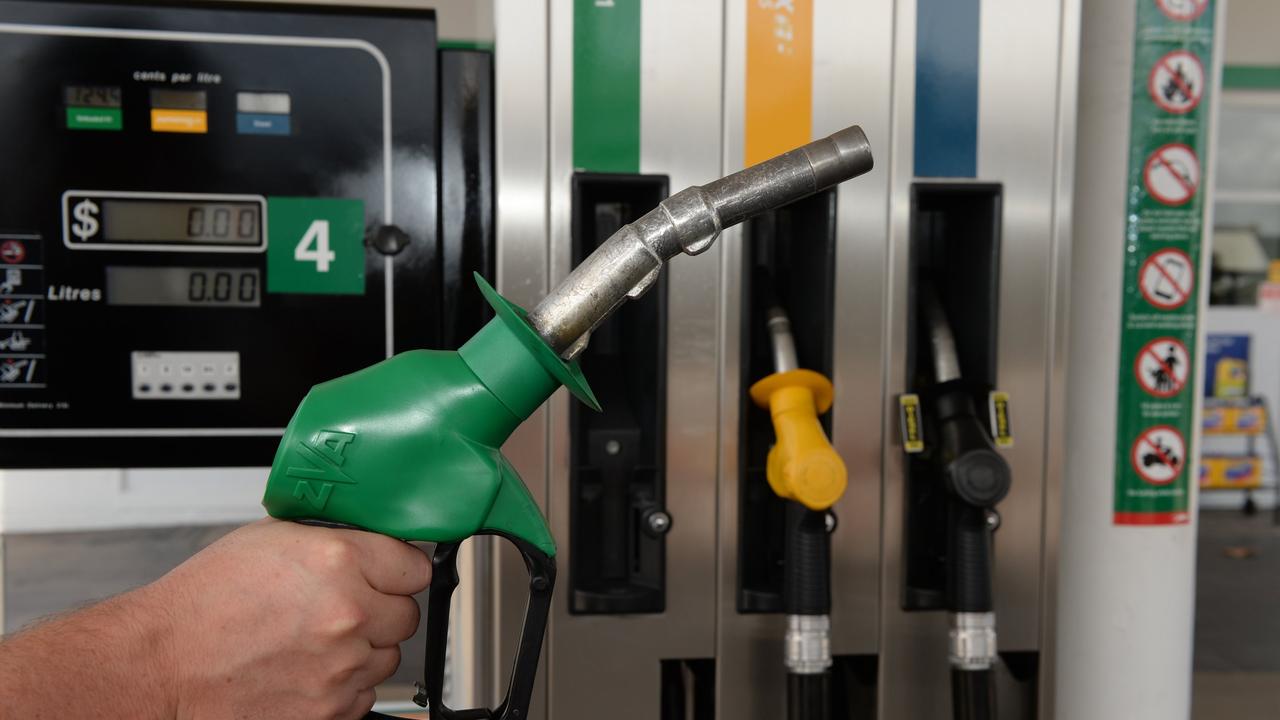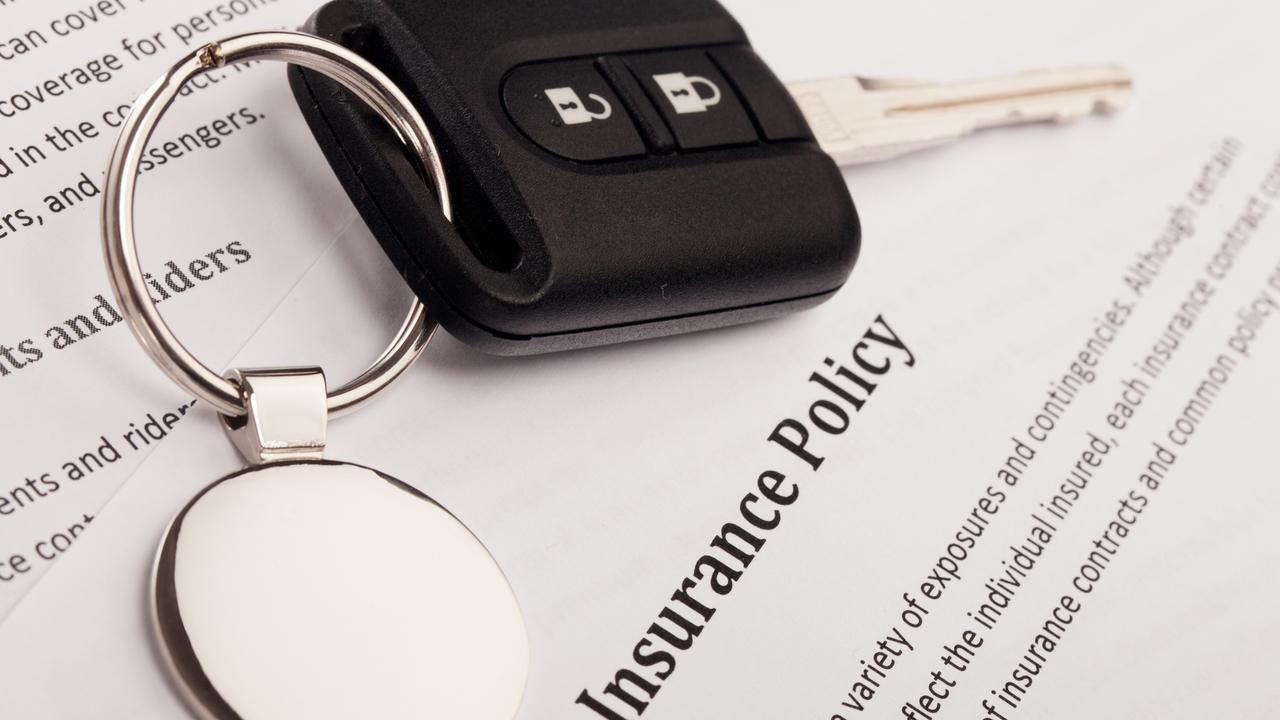Car of the year finals: Best family car
Three of the best new sedans to arrive this year all wear a premium badge, but they are all very different vehicles. But which is the best?
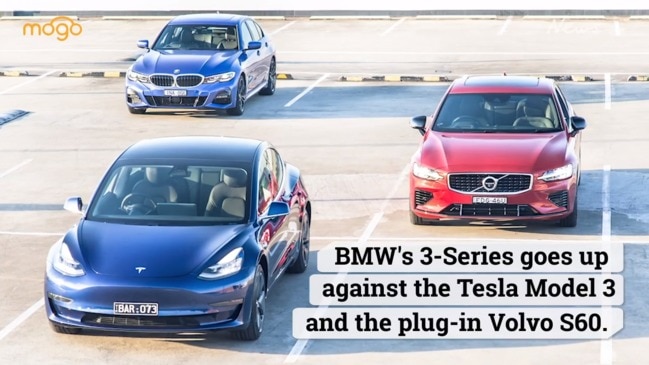
Sedan sales are in decline these days as buyers flock to SUVs and four-wheel drive utes. There are a couple of notable exceptions; the Mercedes-Benz C-Class and BMW 3 Series outsell every sedan except Toyota’s Camry.
It’s not surprising, then, that the most compelling new sedans to arrive this year wear prestige badges.
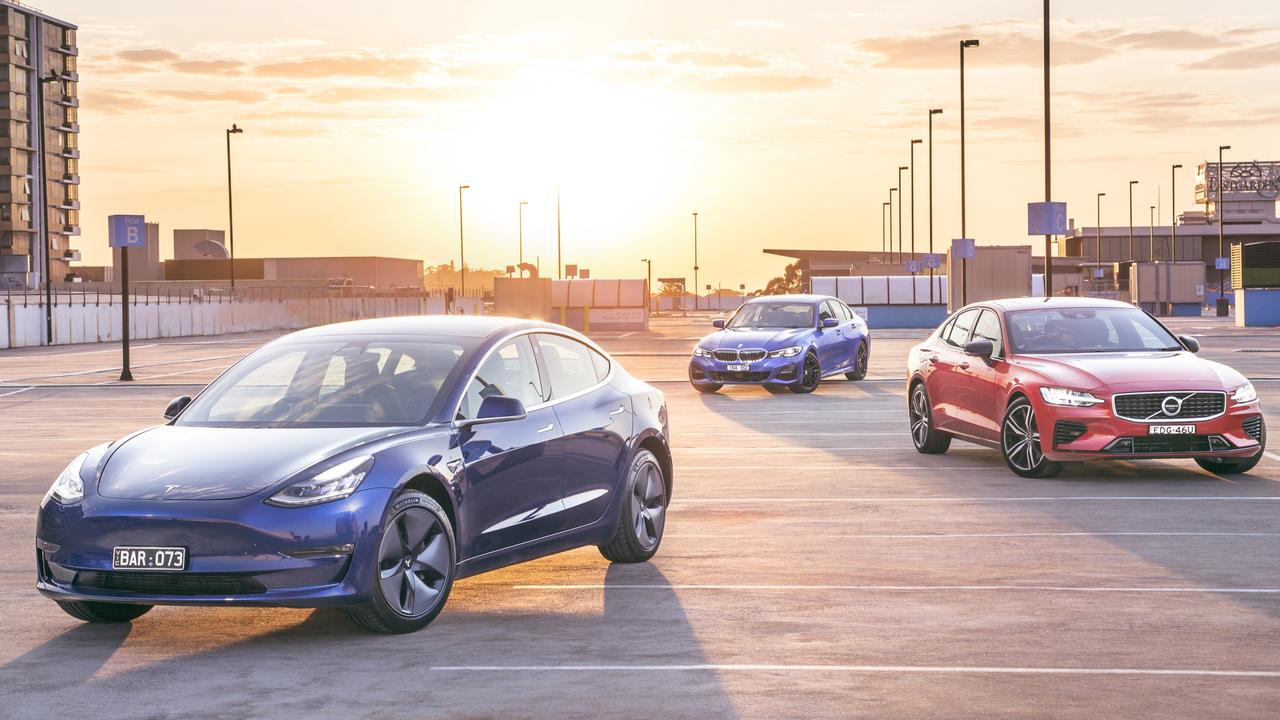
As we enter the finals of our revamped Car of the Year awards, the first playoff in our seven categories is for the prize of Best Family Car. This contest is between BMW’s 3 Series, Volvo’s plug-in hybrid S60 and the Tesla Model 3.

The winner of each category will compete for the overall title.
BMW 330i
The 330i is the only conventional choice here — power comes from a 2.0-litre four-cylinder turbo matched to an eight-speed automatic. BMW has a plug-in version of the 3 Series but we reckon this is the sweet spot of the range.
The BMW’s cabin is an intoxicating blend
of luxury, tech and sporty touches. The wide 12.3-inch screen sits high on the dash for better vision.
In front of the driver is a configurable digital screen complemented by a head-up display that shows your speed and the prevailing speed limit on the windscreen. In a clever touch, the readout glows red if you exceed the speed limit.

The BMW also has a dial to scroll through the various infotainment menus, which is far less distracting than fiddling with a touchscreen.
The heavily bolstered leather seats grip you tightly through the corners while the thick-rimmed leather steering wheel with M-badge proudly displayed makes you feel as if you’re in a sports car.
That impression doesn’t fade when you point the 330i at a string of corners. There’s a lovely howl from the exhaust when you explore the upper limits of the rev range, the steering is razor sharp, the brakes bite hard and the BMW turns into bends and hairpins with more precision than its two rivals here.
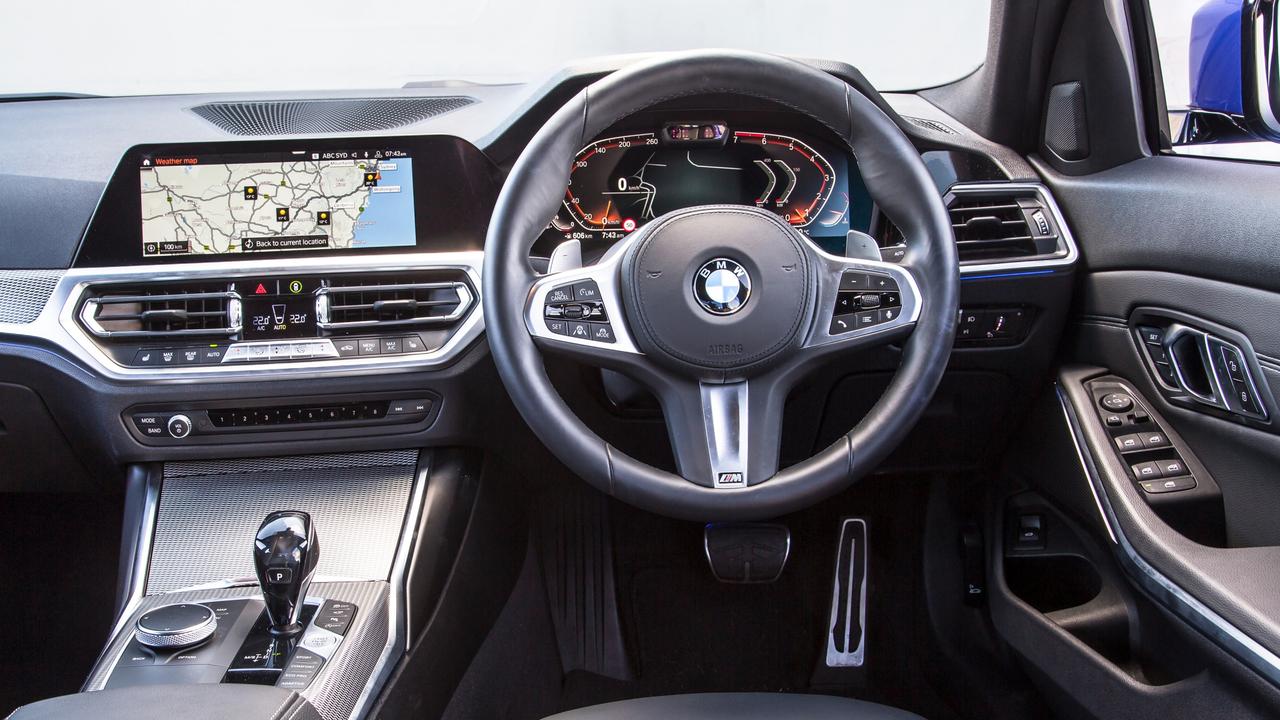
On paper, it’s the least powerful and slowest to 100km/h but by the seat of the pants it feels as if it would drive out of sight of the others on a mountain pass.
It’s not all good news. The stiffer suspension means a less than cushy ride over potholes and corrugations around town.
Fuel use will creep into the teens if you’re not careful in the city — when its two rivals can do the commute without using a drop of petrol, it becomes an issue.
Rear seat accommodation is tighter than the others, too, although the separate temperature controls for the rear aircon are a deft touch.
Volvo S60 T8
The numbers for Volvo’s plug-in hybrid sedan defy logic. The power output of the turbocharged and supercharged four-cylinder, supplemented by an electric motor, is 311kW. Volvo claims a 0-100km/h time of 4.3 seconds but fuel use is just 2.0L/100km.
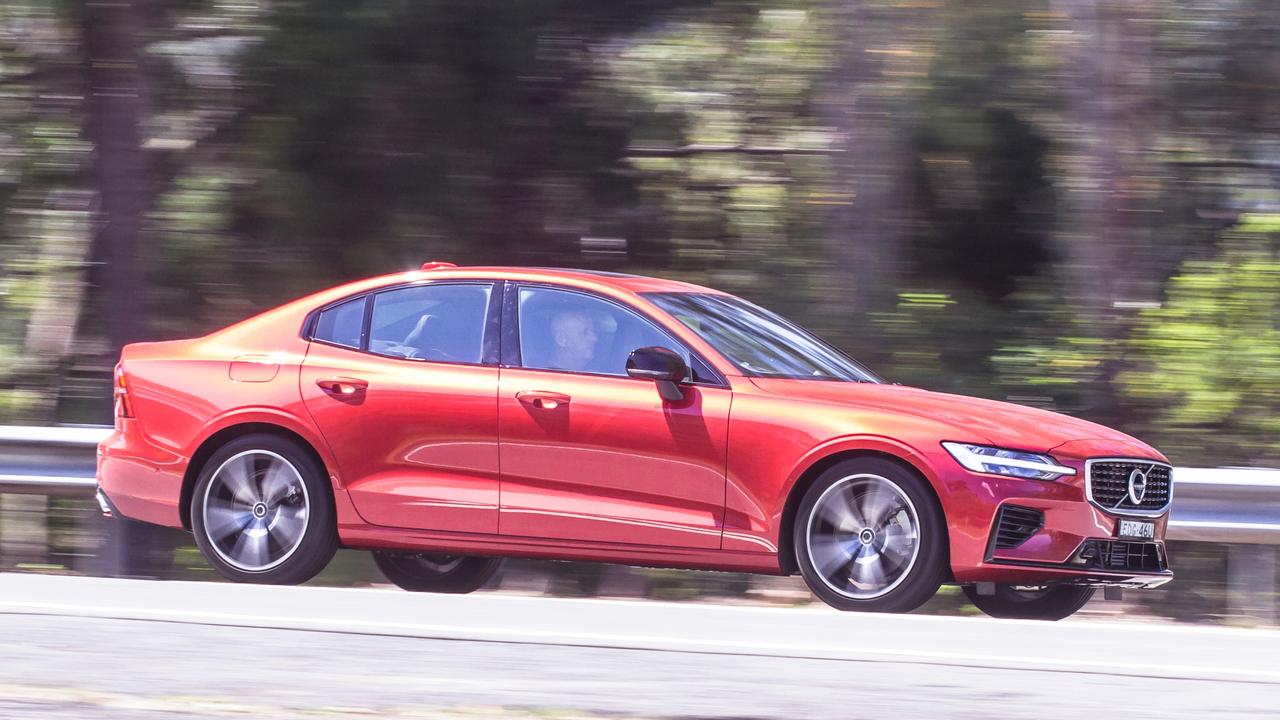
The fuel number is misleading, as it’s based on a short test cycle that places extra emphasis on the car’s 50km electric-only range. We drove it for a couple of hundred kilometres and returned about 8L/100km.
It’s a case of horses for courses — if your commute round trip is 50km or less, you could theoretically use no fuel during the week.
There’s no doubt the car is quick but it doesn’t really feel as quick as claimed — or much quicker than the 330i.
It’s also less assured through the bends than the BMW. It’s a much heavier car — by more than 400kg — and you feel that weight when the Volvo changes direction. The nose pushes wide when pressed.

Around town, it soaks up bumps well and glides along silently in electric mode, with less tyre and wind noise than the Tesla.
The Volvo wins points for its roomy, comfortable and well-designed cabin. The seats provide excellent support, while it retains the stylishly clean dash layout that gained admirers in the award-winning XC40 and XC60.
The high-resolution centre screen works like an iPad with scroll and pinch features and will win over technophiles. So will the hybrid set-up, which allows the driver to choose driving modes: maximum efficiency, maximum performance or a mix of both.
If you’re using electric power, a lightning bolt illuminates; use petrol and it’s a drop of fuel. It also shows you the threshold at which the petrol engine will kick in when you press the accelerator.
Tesla Model 3
The standard model gains selection for this comparison because it is lineball on price with petrol-powered luxury rivals. That’s no mean feat when mainstream EVs are roughly double the price of a conventional car.
Fans of the Tesla will call the interior design minimalist, critics will say it’s austere. Our testers landed somewhere in between.
There’s nothing in front of the driver except the steering wheel and windscreen.
All the information, including the speedo, is displayed on an oversized tablet in the centre of the dash.
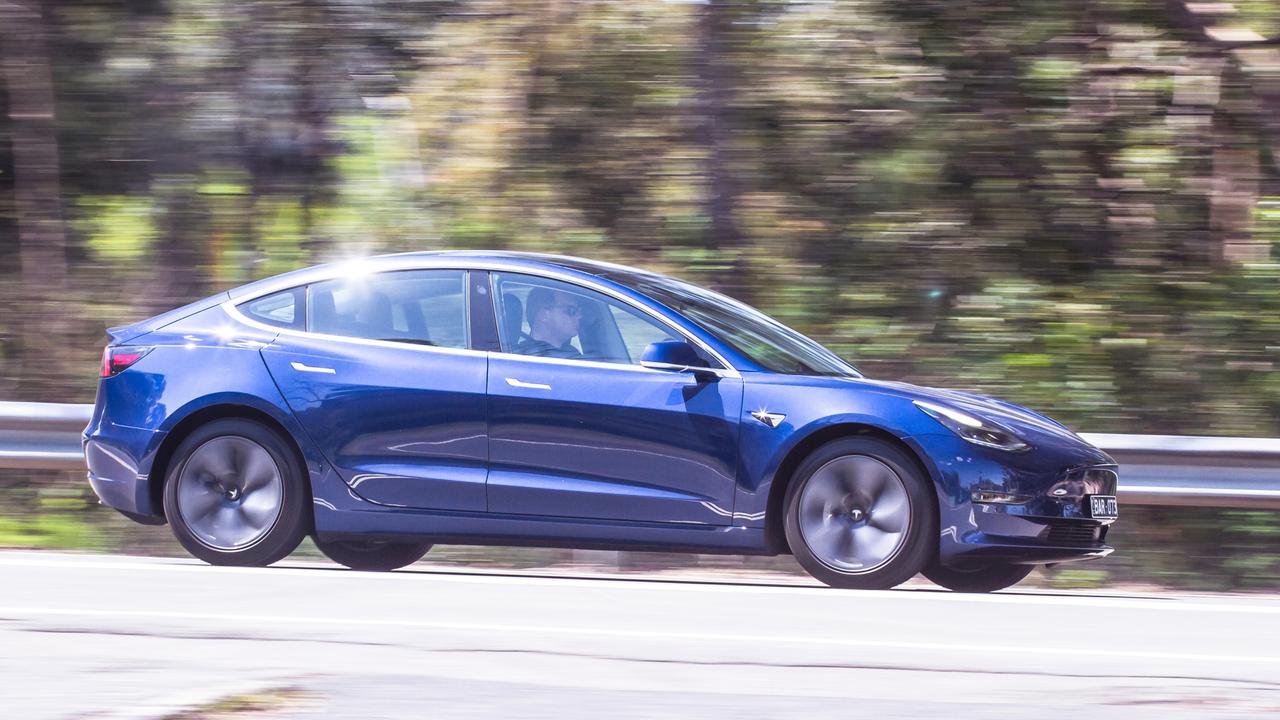
There are no buttons or dials, apart from two thumbwheels on the steering wheel, and you even need to use the tablet to open the glovebox. A unique set-up, it can also be distracting.
No CarPlay/Android Auto is a pain — but hook up Spotify and the stereo is a cracker.
The cabin is airy and roomy, especially in the rear, where the flat floor means there is more room for the middle passenger. Boot space is generous, thanks to an additional compartment under the bonnet, while vision is pretty good all round.
We see some ill-fitting joins in the cabin and on exterior panels — and have seen similar issues on other Teslas on test.
The Tesla’s trump card is undoubtedly performance. Acceleration comes in a silent rush that never fails to impress first-time passengers, while the car feels glued to the tarmac when pushed along a winding road.
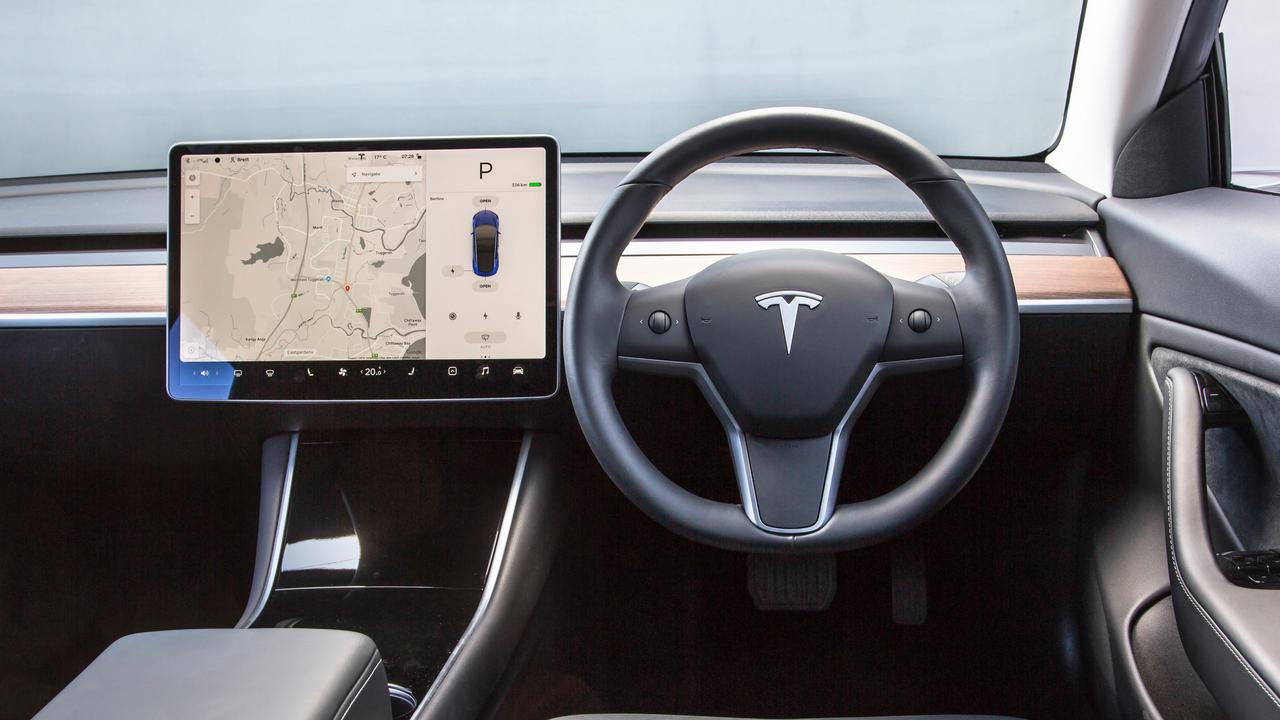
It doesn’t quite feel as balanced and nimble as the 330i but it grips tenaciously and steers faithfully. It’s also impressively light for an electric vehicle, weighing only marginally more than the BMW.
The claimed range is 460km but that’s a pipe dream if you’re doing any highway driving. A test drive mixing city streets with winding country roads suggests it is closer to 300km.
This means range anxiety is still an issue for weekend trips out of town, although Tesla’s network of superchargers is better than rivals and growing.
The lowdown
The BMW is the driver’s car, the Volvo is classy and modern, while the Tesla is the future. All have their charms and foibles. We’ll announce a winner of this contest when our COTY series has played out.

BMW 330i vitals
Price: About $77,100 drive-away
Warranty/servicing: 3 years/100,000km, $1565 for 5 years
Safety: 8 airbags, lane-keep assist, auto emergency braking front and rear, active cruise, blind-spot monitor
Engine: 2.0-litre 4-cyl turbo, 190kW/400Nm
Thirst: 6.4L/100km
Boot: 480L
Spare: None, run-flats
Tesla Model 3 vitals
Price: About $74,000 drive-away
Warranty/servicing: 4 years/80,000km, no capped servicing
Safety: 8 airbags, blind spot warning, lane keep assist, active cruise, front and rear AEB
Motor: Single synchronous electric motor, 211kW, torque figure not quoted
Efficiency: 16kWh/100km
Boot: 425L
Spare: None. Repair kit ($129)
Volvo S60 T8 vitals
Price: About $94,500 drive-away
Warranty/servicing: 3 years/100,000km, $1595 over three years
Safety: 8 airbags, lane-keep assist, active cruise, blind spot monitor, AEB
Engine: 2.0-litre 4-cyl turbo/supercharged, electric motor, 311kW/670Nm
Thirst: 2.0L/100km
Boot: 390L
Spare: None. Repair kit

